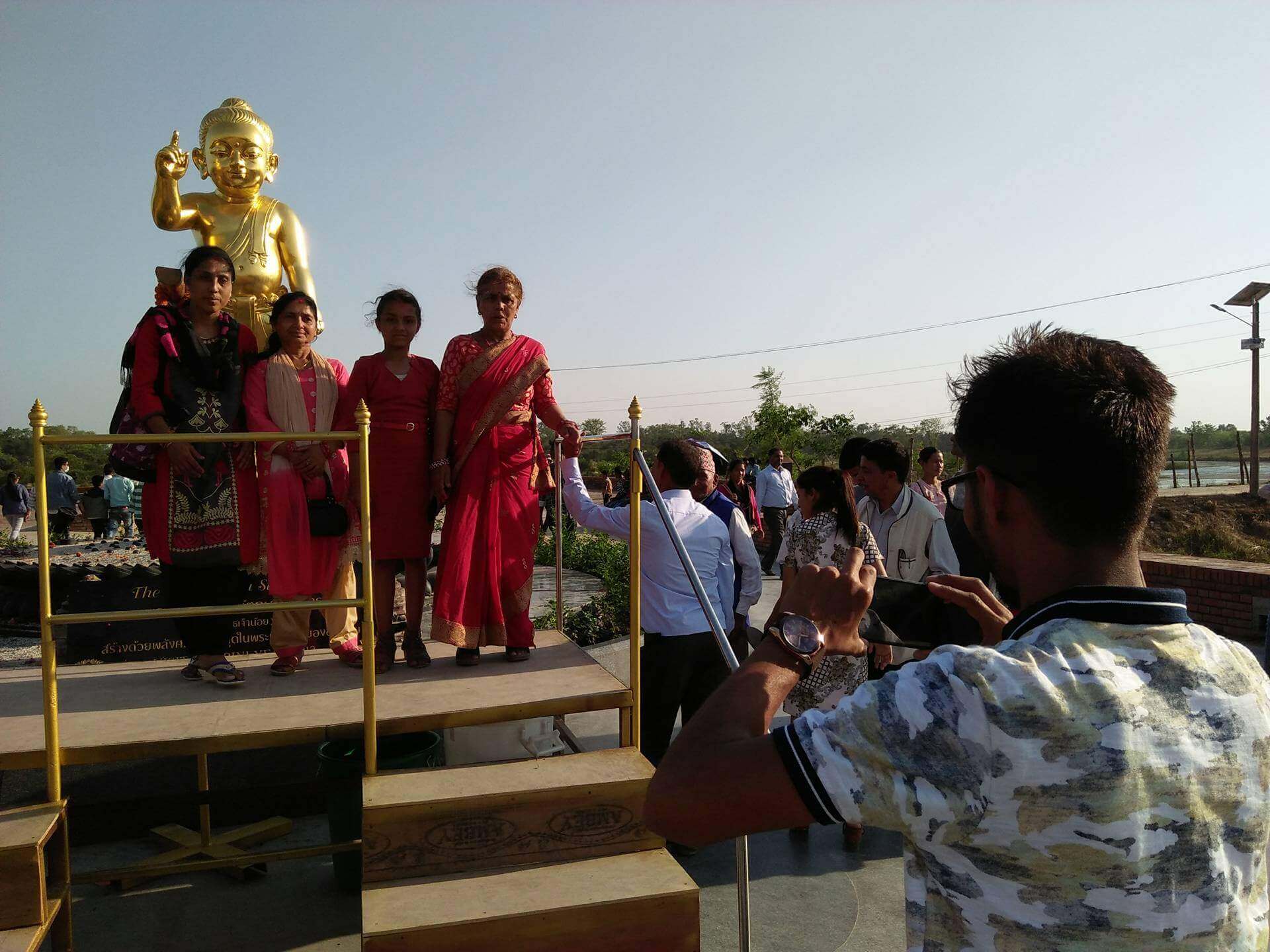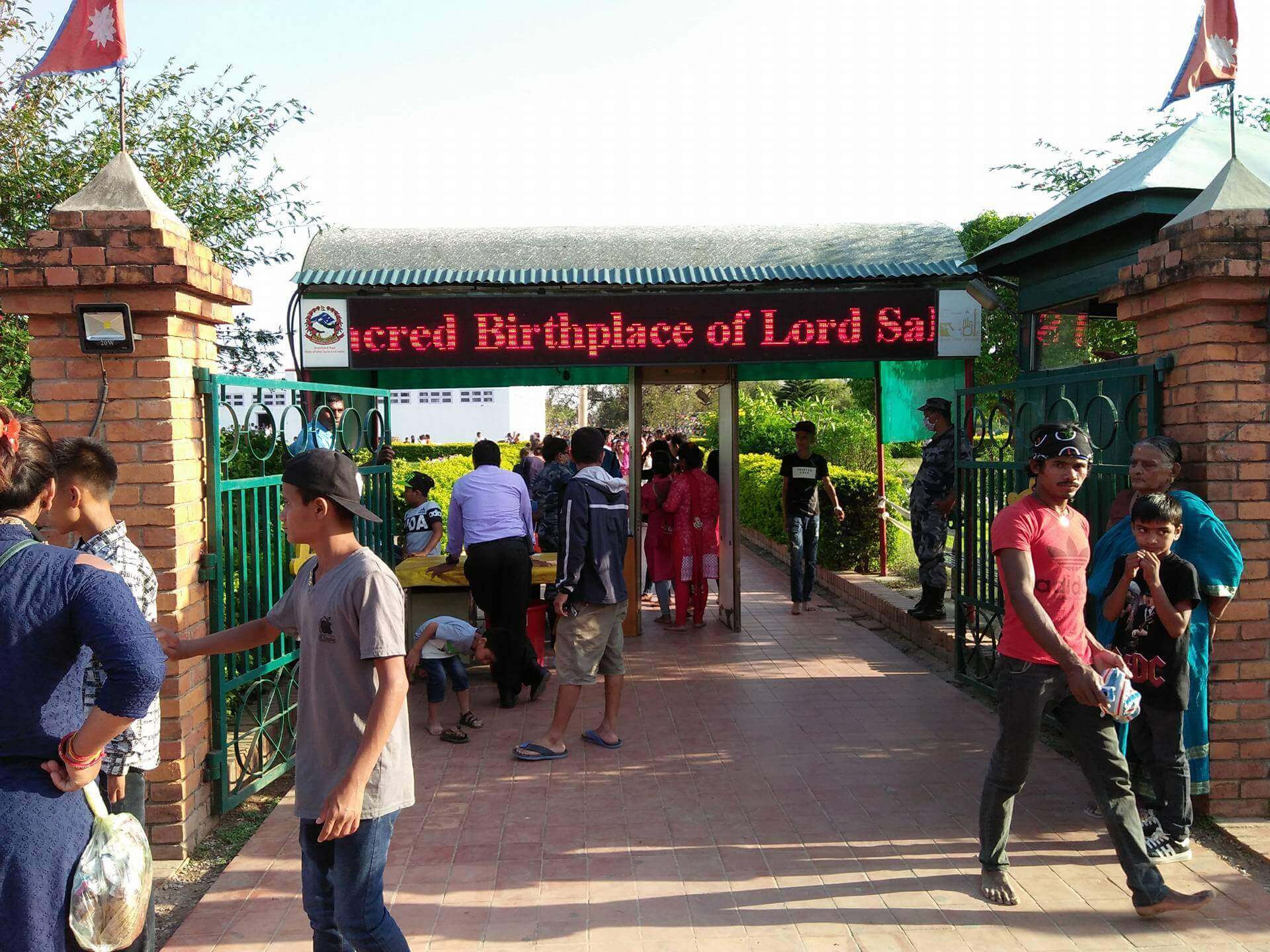Birthday party

Buddha Jayanti, which falls on 30 April next week, is once again an annual reminder of the decades of political neglect and corruption that have prevented Nepal from taking full advantage of its most-important pilgrimage site.

Thousands of Buddhist monks, scholars and devotees will be visiting the nativity place of the Buddha for a two-day international conference this weekend followed by a day of prayers and meditation on Monday.
While there, pilgrims and tourists will be reminded once again of how this important World Heritage Site has not been allowed to attain its true importance. On the other hand, the sanctum is turning into an over-developed tourist theme park where nations compete to erect ever-more grandiose monuments.

The Lumbini Development Master Plan drawn up by Japanese architect Kenzo Tange in 1978 was to be completed in 15 years. Four decades later, the Lumbini Development Trust (LDT) says it still needs 15 years to do the job.
Prime Minister KP Oli, during his first tenure in 2016, had instructed the LDT to complete all 18 remaining infrastructure projects in the master plan within two years. However, instead of allocating more resources, the Ministry of Finance cut the budget for Lumbini from Rs710 million in 2016 to Rs570 million in 2017.
Lack of resources, however, is not the only reason for the slow pace of work. Political instability and corruption play an even bigger role -- the LDT has been led by as many as 34 Ministers of Culture in the last 28 years. Most of them were political appointees intent on making money on the side.
Laxman Pokharel, a Buddhist scholar in Lumbini, says: “If the government really cares about this sacred shrine, it first needs to stop appointing its cadre to the LDT.”

Past LDT heads even allowed construction of luxury hotels in a wetland area preserved as a crane sanctuary. After Awadesh Tripathi, a 32-year-old monk and Buddhist scholar involved in crane conservation, was appointed Vice Chair of the LDT last year, the plan was scrapped. This may mean the new government may not retain him.
Nepal plans to bring in two million tourists after the much-delayed new airport is completed next year. The number of pilgrims visiting Lumbini (like Koreans pictured on the top) every year is already 1.5 million, and bringing in 500,000 more tourists will not be difficult. However, a new cement factory in the Bhairawa industrial corridor threatens the holy site with air pollution.

What will boost the economy will be if more pilgrims visiting Lumbini come through Nepal instead of being a part of the Indian Buddhist circuit. At present 90% of pilgrims come via India, and don’t even spend a night here.
Says culture expert Gitu Giri: “We need to give pilgrims and tourists more reasons to spend more days in and around Lumbini.”
There is a plan to develop a 157 sq km area covering other Buddhist heritage sites like Tilaurakot, Devdaha and Ramgram as Greater Lumbini. But given the delays in implementation of the master plan, it is doubtful if it will ever be done.
Buddhist scholar Bimal Shakya concludes: “Neglect of Lumbini is a disrespect to the followers of Buddhism all over the world.”
Read also:
Buddha's birthplace on his birthday, Seulki Lee
Cranes replace cranes in Lumbini, Om Astha Rai




